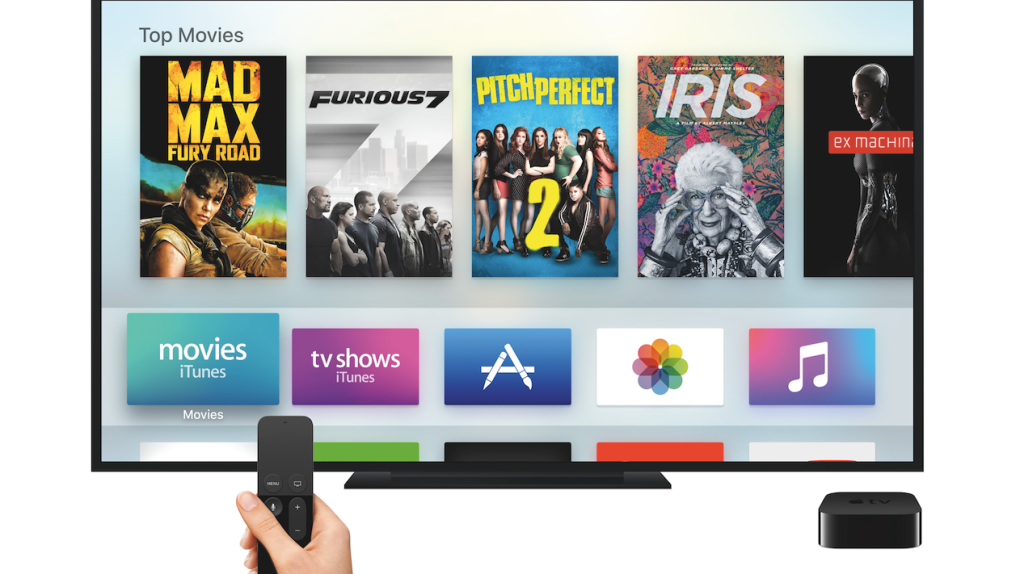After nearly a decade of research, development, and prototyping, Apple not too long ago decided to completely scrap its plans to release an HDTV. Instead, the company regrouped and decided to go all in with a multipurpose set-top box, the fruits of which were unveiled last month with the introduction of the fourth-gen Apple TV.
Though Apple may have abandoned its HDTV plans, it still has its eyes firmly set on the living room. In fact, the company’s new Apple TV is much better positioned to infiltrate the living room than an HDTV would have ever been. What’s more, going the set-top box route will also prove to be much more lucrative for Apple in the long run. In short, Apple abandoning its HDTV plans and going all-in with a completely revamped Apple TV was a stroke of genius.
Here’s why.
DON’T MISS: Video shows why Apple has only scratched the surface of 3D Touch’s potential
Before expounding on the wisdom of positioning the Apple TV as a trojan horse for the living room, let’s first touch on a few of the reasons why Apple opting not to release its own HDTV was a fundamentally smart move.
For starters, there’s not that much money to be had in the HDTV business given that the industry is famously plagued by low margins. Second, and more importantly, the TV market is already filled with high-quality sets that consumers are overwhelmingly happy with. Walk into any Best Buy and it’s clear that 4K HDTVs from the likes of Sony, Samsung, and LG leave little to be desired from both a picture quality and industrial design perspective. Remember, Apple’s bread and butter is entering new markets where there’s lots of room for innovation and differentiation. The HDTV market, in that regard, doesn’t quite present that type of opportunity.
Additionally, it makes no sense for Apple, as a multi-billion dollar company, to release a new product unless it can move the needle financially, or at the very least, create some sort of lucrative halo effect. When one considers that HDTVs are replaced every 5-7 years, a branded HDTV from Apple seems like an all-around bad idea from a strategic perspective. What’s more, one shouldn’t forget the innumerable logistical issues (repairs/pick-up/floor space) that Apple would have to elegantly traverse with its own HDTV.
The 4th-gen Apple TV, in stark contract, is more in line with a traditional product offering from Apple. First off, if history is any indication, it’s a safe bet that margins on the upcoming Apple TV will be rather high. Secondarily, the device is cheap enough (32GB model for $149 and 64GB model for $199) such that people might be inclined to upgrade every 2-3 years as new differentiating features — i.e 4K support — are introduced.
Functionality wise, the upcoming 4th-gen Apple TV represents an an extremely exciting upgrade. So while Apple TV sales have increased dramatically over the past few years, it stands to reason that sales are poised to jump to the next level once the new model arrives in early November.
Once Apple rolls out its rumored TV subscription service, reportedly set to drop in early 2016, the value proposition of the Apple TV will become even harder to ignore. In fact, it may ultimately obviate the need for any other set-top box. Think about it: a $149 device will give users access to all of the big-time streaming services like Netflix and HBO Go while also providing them with an option for an affordable and lightweight cable option if they’re inclined to watch live TV. And to top it all off, the Apple TV will also double as a gaming platform. Sure, we won’t see console level games initially, but this is just a first-gen product and it’s fair to assume that Apple, over time, will continue to beef up the device’s internals. And who knows, perhaps in 2 years the Apple TV will be able to support Xbox 360 and PS3 quality games. Even though the Apple TV won’t be appealing to the hardest of hardcore gamers, it’s important to remember that the iPhone became a gaming juggernaut on the back of casual gaming.
All this being said, the Apple TV, from a strategic and economic perspective, is a smart play. As opposed to HDTVs, the Apple TV enables Apple to compete on something it knows well — software. Financially, the Apple TV will be a high-margin product that Apple can sell in high volume. Even better, the Apple TV fits comfortably within Apple’s existing strategy of selling devices that can be refreshed every few years.
In effect, the Apple TV is a trojan horse that will soon be deployed, and perhaps one day, finally win the decades old battle for control of the living room.




